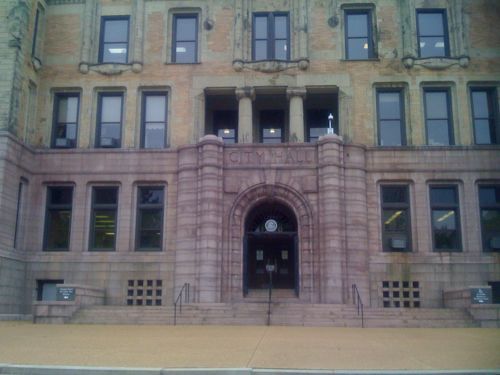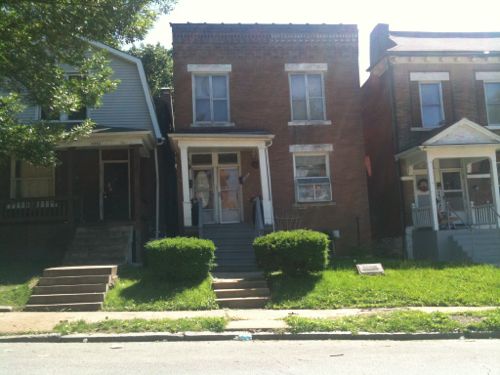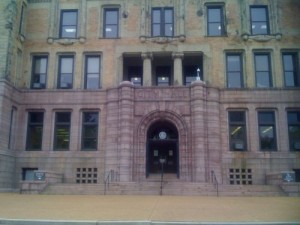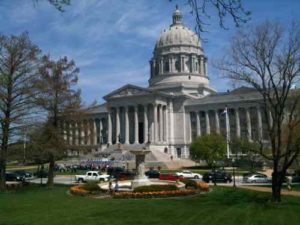St. Louis Board of Aldermen: Board Bills 49-61

Last week the St. Louis Board of Aldermen had new Board Bills 43-48 on their agenda for introduction but they adjourned after announcements — see video here.
ON AGENDA FOR INTRODUCTION TODAY 6/9/17:
- B.B.#49 – Davis –An ordinance approving a Redevelopment Plan for 3904 Folsom.
- B.B.#50 – Conway –An ordinance authorizing and directing the Mayor and Comptroller to execute, upon receipt of and in consideration of the sum of One Dollar ($1.00) and other good and valuable consideration, a Quit Claim Deed to remise, release and forever quit-claim unto McGrath & Associates, Inc., certain City-owned property located at 1920 South Kingshighway Blvd.
- B.B.#51 – Davis –An Ordinance recommended and approved by the Airport Commission, the Board of Public Service, and the Board of Estimate and Apportionment, establishing and authorizing a public works and improvement program (the “Airfield, Building & Environs Projects”) at St. Louis Lambert International Airport, consisting of capital improvement projects to and for the terminal complexes, concourses, parking facilities, taxiways, runways, and associated Airport structures, and facilities, and environs including certain equipment and vehicles, and other associated Airport improvements, entitled “FISCAL YEAR 2017 PROJECT/EQUIPMENT LIST (PART 2)” at a total estimated cost of Nine Million Dollars; authorizing an initial appropriation in the total amount of Two Million Three Hundred Sixty Four Thousand Three Hundred Ninety Six Dollars from the Airport Development Fund; and containing a severability and an emergency clause.
- B.B.#52 – Spencer/Ingrassia –An Ordinance pertaining to the Animal Code; repealing Section Two of Ordinance 62941, providing definitions, codified as Section 10.20.010 of the Revised Code, and enacting in lieu thereof a new section on the same subject matter; repealing Section Five of Ordinance 62853, codified as Section 10.20.013 of the Revised Code, pertaining to Rules to be promulgated by the Health Commissioner and enacting in lieu thereof a new section on the same subject matter; repealing Section One of Ordinance 68463, pertaining to the prohibition of the keeping of certain animals, codified as Section 10.20.015 of the Revised Code, and enacted in lieu thereof is a new section on the same subject matter; repealing Section Eight of Ordinance 62853, pertaining to the regulation of animal housing, codified as Section 10.20.016 of the Revised Code, and enacting in lieu thereof a new section on the same subject matter; repealing Section Four of Ordinance 47883, pertaining to the penalty for violating certain sections of the Revised Code, codified as Section 10.20.160 of the Revised Code, and enacting in lieu thereof a new section on the same subject matter; repealing Section One of Ordinance 47883, pertaining to the definition of fowl, codified as Section 10.20.130 of the Revised Code; repealing Ordinance 42333, codified as Section 10.70.170 of the Revised Code, pertaining to the appointment of a veterinary surgeon; and containing a severability clause.
- B.B.#53 – Howard –An ordinance directing the Department of Public Safety, starting in 2018, to move the City of St. Louis’ National Night Out from the first Tuesday of August to the first Tuesday of October.
- B.B.#54 – Vollmer –An Ordinance recommended by the Board of Estimate and Apportionment authorizing The City to issue its Taxable Industrial Development Revenue Bonds (Huvepharma Inc. Project), Series 2017, in a principal amount of not to exceed $20,700,000 for the purpose of providing funds to pay the costs of acquiring, constructing, equipping and improving an industrial development project in the City.
- B.B.#55 – Conway –An Ordinance pertaining to the Transit Sales Tax imposed pursuant to Section 94.660, RSMo., as adopted and approved by the voters on August 2, 1994, pursuant to Ordinance 63168 creating the “City Public Transit Sales Tax Trust Fund” directing the Treasurer to deposit funds received pursuant to said sales tax into the “City Public Transit Sales Tax Trust Fund – Account ONE” appropriating $11,560,000 from the said sales tax for the period herein stated to the Bi?State Development Agency for certain purposes; providing for the payment of such funds during the period July 1, 2017, through June 30, 2018; and containing a severability clause.
- B.B.#56 – Conway –An Ordinance pertaining to the Transit Sales Tax imposed pursuant to Section 94.660, RSMo., as adopted and approved by the voters on November 4, 1997, pursuant to Ordinance 64111 creating the “City Public Transit Sales Tax Trust Fund” directing the Treasurer of the City to deposit funds received pursuant to said sales tax into the “City Public Transit Sales Tax Trust Fund – Account TWO” appropriating $11,560,000 from the said sales tax for the period herein stated to the Bi?State Development Agency for certain purposes; providing for the payment of such funds during the period July 1, 2017, through June 30, 2018; and containing a severability clause.
- B.B.#57 – Conway –An ordinance appropriating the sum of $21,877,000, as described and defined in Section 94.600 through 94.655, RSMo. 2000 as amended for the period herein stated, which sum is hereby appropriated out of the “Transportation Trust Fund” to the Bi?State Development Agency for transportation purposes; and further providing that the appropriation is conditional upon the Bi?State Development Agency supplying the Board of Estimate and Apportionment an annual evaluation report; further providing that in no event shall the Comptroller draw warrants on the Treasurer for an amount greater than the amount of proceeds deposited in the “Transportation Trust Fund” during the period from July 1, 2017 through June 30, 2018; and containing a severability clause.
- B.B.#58 – Conway –An ordinance pertaining to the payroll expense tax, repealing, subject to voter approval, those exemptions from the tax in section nine of ordinance 60737 for religious and charitable organizations and institutions, not-for-profit civic, social, service or fraternal organizations, not-for-profit hospitals and not-for-profit educational institutions that employ more than twenty (20) employees; submitting to the qualified voters the question whether the exemptions to the payroll expense tax for religious and charitable organizations and institutions, not-for-profit civic, social, service or fraternal organizations, not-for-profit hospitals, and not-for-profit educational institutions that employ more than twenty (20) employees shall be repealed and a payroll expense tax of one-half of one percent (0.5%) imposed; with an emergency clause.
- B.B.#59 – Conway –An ordinance, relating to the Solid Waste Services Fee established under Ordinance No. 68698, authorizing an increase to said fee of three dollars ($3.00) per month per dwelling unit commencing with the fiscal year beginning July 1, 2017, and containing an emergency clause.
- B.B.#60 – Conway –An ordinance relating to public safety; imposing, under and by the authority of Section 67.547 RSMo, subject to the approval of the voters, a one?half of one percent sales tax on all retail sales made in the City of St. Louis which are subject to taxation under the provisions of Sections 144.010 to 144.525 RSMo, solely for the purpose of providing revenues for the operation of the department of public safety, including police and fire divisions, in addition to any and all other sales taxes allowed by law; submitting to the qualified voters of the City of St. Louis a proposal to impose such tax; providing for an election and the manner of voting thereat; providing that if such question shall receive the votes of a majority of the voters voting thereon that such tax shall be authorized and in effect as provided in Section 67.547 RSMo; and containing an emergency clause.
- B.B.#61 – Green/Tyus/Guenther/Williamson – An Ordinance to require the provision of community benefits and executed Community Benefits Agreements for certain development projects seeking public support for investments above certain threshold levels; including certain exemptions; providing penalties and provisions for enforcement; and containing a severability clause.
The meeting begins at 10am, it can be watched online here. See list of all board bills for the 2017-2018 session.
— Steve Patterson


